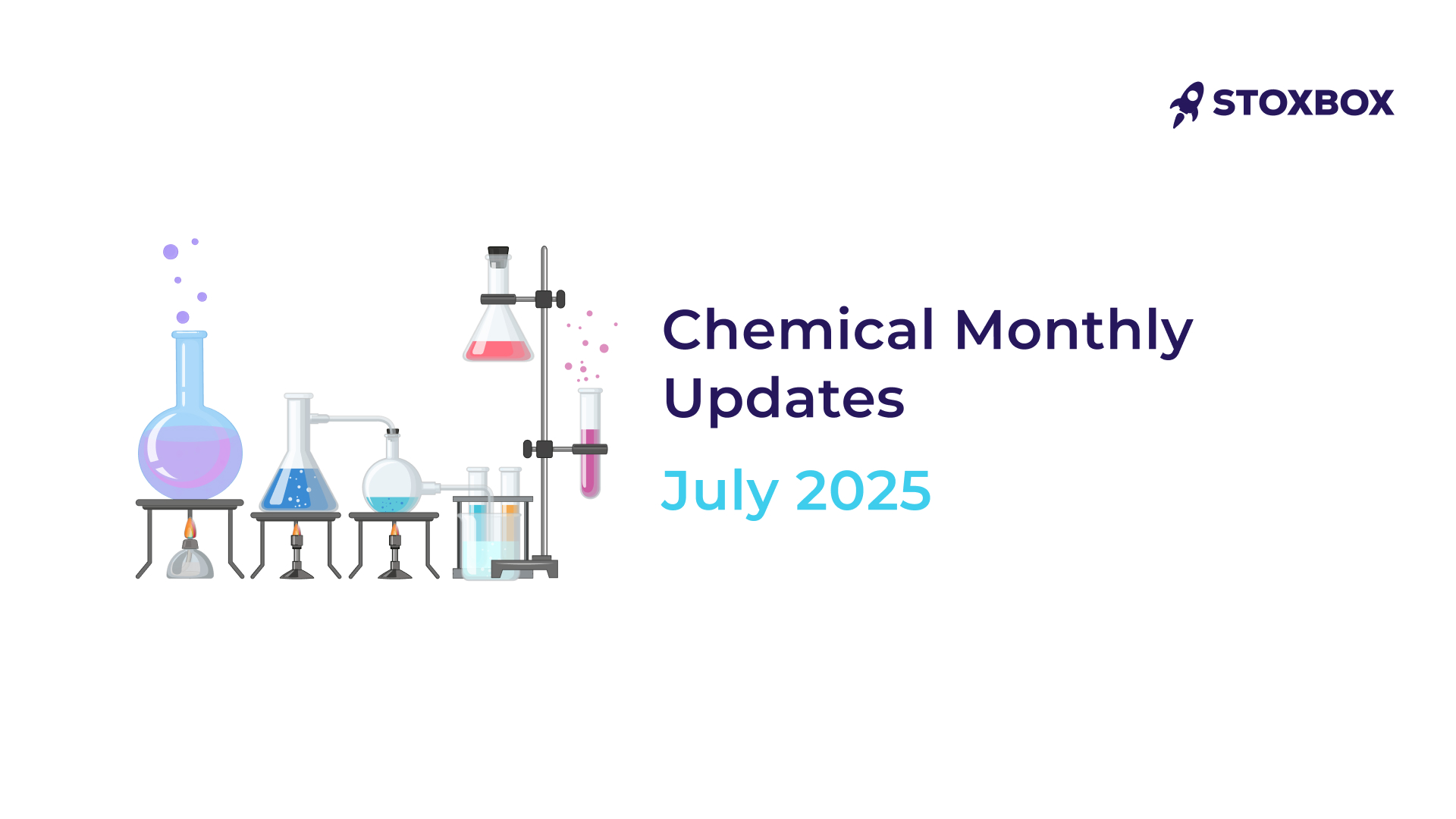Navigating subdued trends amid global uncertainty
In July, the chemical sector experienced pricing pressure due to elevated global tariffs, including stricter US Section 301 duties on Chinese imports, which disrupted trade and inflated input costs. Weak demand in the West, slowing growth in China, and regulatory actions in the EU and India further added to uncertainty, driving supply chain shifts and weighing on overall price stability. Despite near-term challenges, India’s chemical industry stands to gain export share in value-added chemical segments due to lower comparative tariff burdens. The government is actively reviewing the impact and exploring policy responses. Meanwhile, specialty chemical players are expected to remain steady, backed by healthy domestic demand and structural benefit through PLI schemes. As we advance, the global trade environment remains highly dynamic, with the US tariff outlook remaining uncertain, and potential 50% hikes are expected to start in August 2025 if a trade agreement with India is not reached. This uncertainty has heightened volatility in cross-border chemical flows, forcing companies to reassess sourcing and pricing strategies. However, the recently signed UK-India FTA and ongoing EU trade negotiations enhance India’s long-term export prospects, particularly in European markets. On the earnings front, Indian chemical companies delivered a mixed performance in Q1FY26, while margin stress remains in commodity-linked players. The sector shows early signs of recovery, supported by operational efficiency and export-driven opportunities in specialty segments. Overall, the sector continues to navigate global uncertainties and pricing pressures, but improving demand visibility, cost discipline, and a gradual revival in exports signal a potential turnaround, particularly for value-added and specialty-focused players in the coming quarters.
The pricing environment in the current month generally persists, although select categories have shown resilience. Refrigerant pricing remains steady, despite domestic softness, which has been partly offset by exports, benefiting companies such as SRF and NFIL. On the other hand, Methanol prices spiked substantially, while Ethanol and Acetone prices saw a steep decline. Palm oil prices remained elevated, led by favorable pricing and deeper downstream integration into high-value product categories. Isopropyl Alcohol and Benzene witnessed price corrections of 1% MoM each, while Aniline and Ethyl Acetate registered a decline of 2% MoM and 1% MoM, respectively. Phenol and Bromine prices remain flat during the month. Among industrial chemicals, Heavy soda ash pricing is expected to remain subdued, weighed down by persistent global oversupply, muted Chinese demand, and competitive import pressures in the Indian market.
The chemicals sector is expected to witness optimism driven by capex incurred and potentially better pricing in H2FY26. Strong support from the government, in the form of safeguard duties and initiatives such as PLI and Make in India, is also expected to seed growth in the sector. On the whole, Indian chemical companies’ long-term growth prospects in the speciality chemicals sector are expected to be driven by massive revenue opportunities from the perspective of import substitution and a potential rise in exports to global customers. Companies such as Aarti Industries, Acutaas Chemicals, GHCL, Laxmi Organics, Navin Fluorine, Neogen Chemicals, SRF, and Vinati Organics are likely to benefit from the demand for value-added chemical products.
You might also Like.
Union Budget 2025-26 Impact on Sectors
Edit Announcement Impact Companies Enhancing the credit guarantee cover for...


